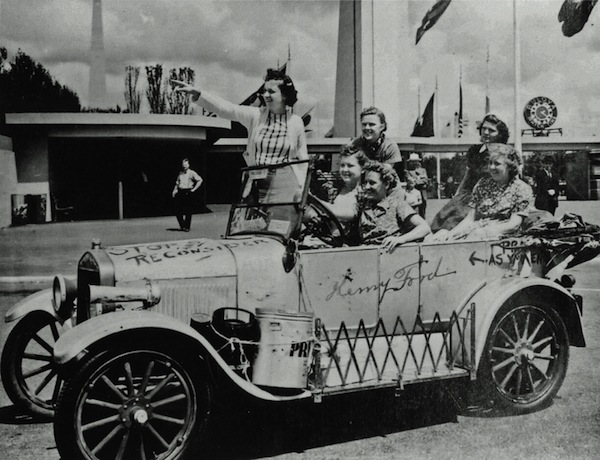This post is part of a series from Loyola public historians attending NCPH 2014.
I do not know if it was the sea, the sun, or that California feeling, but I drank the Kool-aid. Throughout my graduate school experience, I have been told how NCPH is not like other conferences and how the people working in this field are supportive and encouraging of the work their colleagues are doing. From my experience at NCPH 2014 in Monterey Bay, California, I can testify to those statements. As I said to a professor on my return to Chicago, I had an odd, but exciting realization meeting others in the field, outside of my immediate circle.
Three instances stand out in my mind as indicative of the supportive and encouraging nature of the NCPH community. The first is my own experience. I participated in the poster session and a roundtable discussion, and both, produced some very insightful and productive discussions. My colleague, Laura Pearce, and I presented an exhibit proposal we developed for a required class, “Addressing Absences: Exhibiting African-American Suffragist”. At the beginning of the class, partnerships were being developed through our professor and community organizations.
Unfortunately, as things happen, the partnerships dissolved (scheduling conflicts and other distractions) and the exhibits never materialized. When we presented our work at NCPH, Laura and I were continually asked, “Where is this up?” “Is this still up?” “Is this online?” and when we informed visitors it had never actually come to fruition their response was simply, “Why?” Our colleagues wanted to see our exhibit realized, we received several recommendations of organizations we could and should approach with the proposal, and there was talk of going digital with it. So, after graduation, Laura and I have decided to pursue our exhibit proposal, using many of the connections and suggestions we received at NCPH.
Additionally, the roundtable I sat on “Sustaining Historic Preservation Through Community Engagement”, only reaffirmed the notion that our historical work must be centered in the contemporary community. My colleague on this panel, Rachel Boyle, makes several excellent points on this on this issue in her reflection on NCPH.
The third instance was in the panel “Pubic Historians interpret the Far West: A Field Report”. Danica Willis has been the Cultural Resource Manager at Whiskeytown National Recreation Area in northern California for the last three years. As a National Recreation Area, Whiskeytown attracts people, as Danica put it “for the beautiful lake, and the beautiful waterfalls, and the beautiful hiking”, but these visitors don’t necessarily understand the historical development of the area they are playing in. Over Danica’s time at Whiskeytown, she has pushed and prodded more interpretation and community involvement to Whiskeytown. Some of these ideas have worked great, as it did with the “Whiskeytown Harvest Festival” in which Danica promoted apple picking from the recreational area’s substantial orchard. In addition, the visitors were encouraged to think about why the orchards were there, who put them there, and how the planters would have used them. And like all experiments, some failed. But, Danica is excited about continuing to create a fuller and richer understanding (she apparently has a large white board full of ideas) of Whiskeytown as a place.
The conversations and discussions I observed and partook in at NCPH’s annual conference made me excited for the field.










